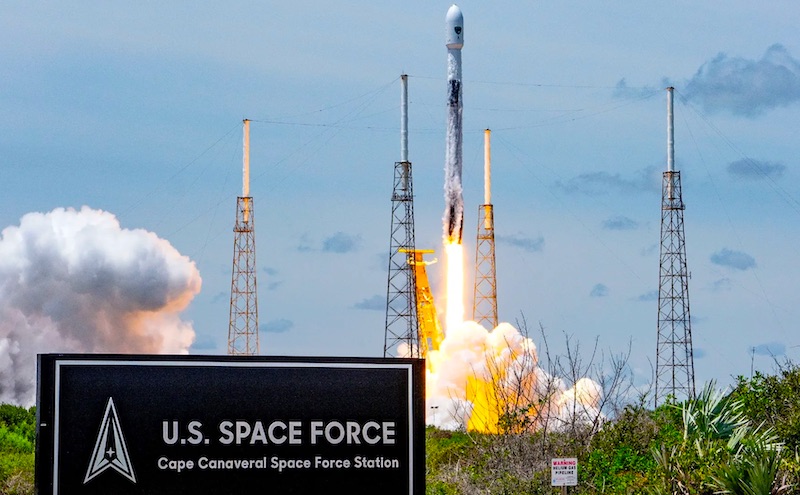WATCH: SpaceX Starship Upper Stage Prototype Explodes During Ground Test in Texas
By Space Coast Daily // June 19, 2025
Super Heavy booster has demonstrated more reliable performance
ANOMALY! Just before Ship 36 was set to Static Fire, it blew up at SpaceX Masseys!
Live on X and YT:https://t.co/GPjZIX1Zyd pic.twitter.com/CfZhDeSGae
— NSF – NASASpaceflight.com (@NASASpaceflight) June 19, 2025
STARSHIP, TEXAS – A SpaceX Starship prototype upper stage exploded during testing at the company’s Starbase facility near Boca Chica, Texas, late Wednesday night.
The incident occurred around 11 p.m. local time on June 18, as engineers were preparing the upper stage—known simply as “Ship”—for its role in the rocket system’s upcoming 10th integrated test flight.
The spacecraft was sitting on a test stand at Starbase’s Massey site, where it was reportedly about to undergo a static fire engine test when the explosion happened.
Video captured by NASASpaceflight.com, which can be seen above, showed the vehicle erupting in a massive fireball, briefly lighting up the night sky.
In a statement posted to X on Thursday morning, SpaceX confirmed the explosion and said that safety protocols had been followed.
“A safety clear area around the site was maintained throughout the operation and all personnel are safe and accounted for,” the company stated. “Our Starbase team is actively working to secure the test site and nearby areas, in collaboration with local officials. There are no hazards to the surrounding communities.”
Starship is SpaceX’s next-generation rocket system, envisioned as a fully reusable vehicle for missions to the Moon, Mars, and beyond.
The rocket comprises two parts: the Super Heavy booster, powered by 33 Raptor engines, and the Starship upper stage, which stands 171 feet tall and is equipped with six Raptor engines.
This latest test failure continues a troubling pattern for the upper stage of the Starship system. In each of the last three flights—Flights 7, 8, and 9—Starship’s upper stage has been lost.
Flights 7 and 8 saw disintegration less than 10 minutes after launch, while the Ship on Flight 9 lost communication 46 minutes into the mission and likely ended up in the Indian Ocean.
In contrast, the Super Heavy booster has demonstrated more reliable performance.
It successfully returned to Starbase in previous missions using the launch tower’s “chopstick” arms for recovery and reuse. On Flight 9, the booster achieved a partial milestone before breaking apart during a planned splashdown.
The Ship that exploded Wednesday had already completed a partial static fire earlier this year, igniting just one engine. The test that resulted in the explosion may have been intended to fire all six engines simultaneously.
Meanwhile, the Super Heavy booster intended for Flight 10 had previously completed a full-duration static fire, successfully lighting up all of its engines.
The U.S. Federal Aviation Administration is continuing its investigation into the anomalies encountered during Flight 9. Given the latest incident, any potential timeline for Starship’s 10th flight will likely face additional delays.
Despite the setback, SpaceX remains focused on developing the Starship system into the most powerful launch vehicle ever built, with long-term goals of transforming humanity into a multiplanetary species.












